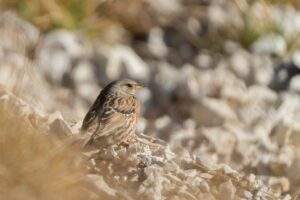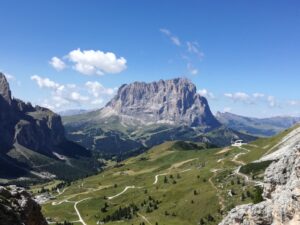Birding Dolomites
The Italian Dolomites may not be as high as the central Alps, but their towering pinnacles and castellations dominate an astounding landscape, the rocks constantly changing color as the crystals catch the ever-shifting light. Woodlands, grasslands, glaciers, and rushing streams alternate with fairy-tale castles and timeless villages, creating a uniquely appealing patchwork.
The Dolomites are one of Europe’s few remaining wildernesses, an ideal setting for a richly varied flora and fauna, including some of the most sought-after birds on the continent. All of the alpine gallinaceous birds are here—black grouse, rock partridge, western capercaillie, and rock ptarmigan—and the mountain forests are home to no fewer than six species of nocturnal raptors, from the huge Eurasian eagle-owl to the boreal and Eurasian pygmy owls. Also present in and around the forests are the nutcracker, coal and crested tits, firecrest, bullfinch, red crossbill, mistle thrush, and ring ouzel, along with gray-headed, Eurasian three-toed, and black woodpeckers. White-throated dippers can be found on valley streams.
Northern wheatears bob and flirt their tails as they hunt their insect prey on rocky fields and cliffs, and curious gangs of alpine choughs, in search of anything approaching the edible, hop fearlessly among the tables of outdoor cafes. Alpine snowfields are the place to look for one of Europe’s most charming passerines, the white-winged snowfinch; these very tame birds can almost be counted on for close views. These same snowfields are home to alpine accentors, water pipits, and the almost inconceivably colorful rufous-tailed rock thrush.
The Dolomites are also home to a timid dweller of the hay meadows, the rare corncrake, most easily detected by the male’s “crex, crex” advertising call. It is also worth keeping an eye to the sky for a golden eagle, Eurasian goshawk, Eurasian griffon, or even an imposing lammergeier. Up on the sheer rock walls, patience and luck can produce very good views of the colorful and butterfly-like wallcreeper.
Even city parks in this area may lead you to a marsh tit, fieldfare, or great spotted woodpecker. But the Dolomites are most famous for their easy access to the highest elevations. The best strategy is to stop at likely-looking sites along minor roads and to take short and easy trails into the woods, or to take the funicular up to natural terraces with panoramic views.
The Dolomites can be easily reached from Bolzano, Trento and Venice.
